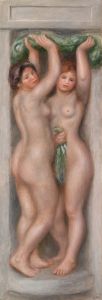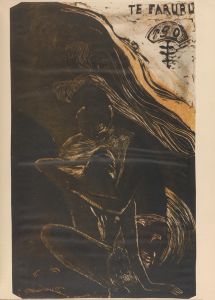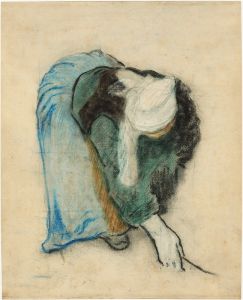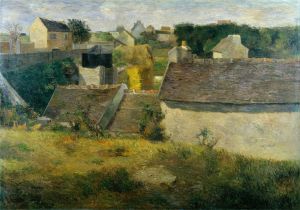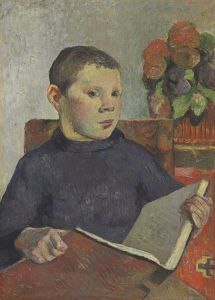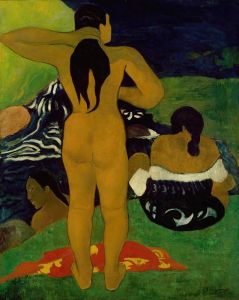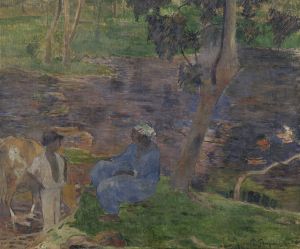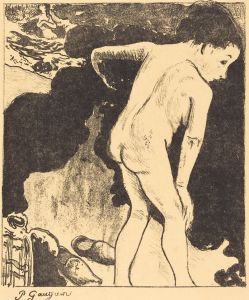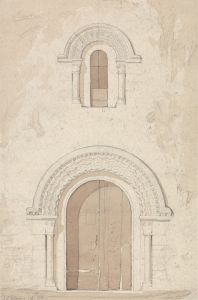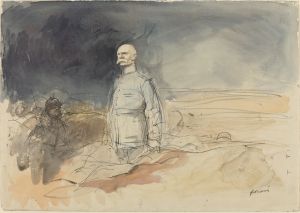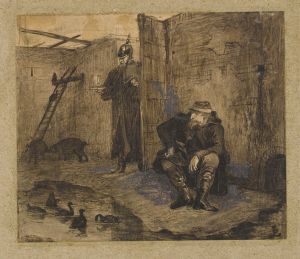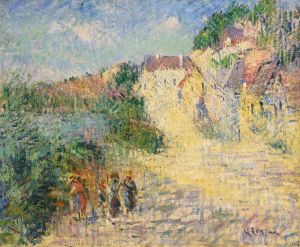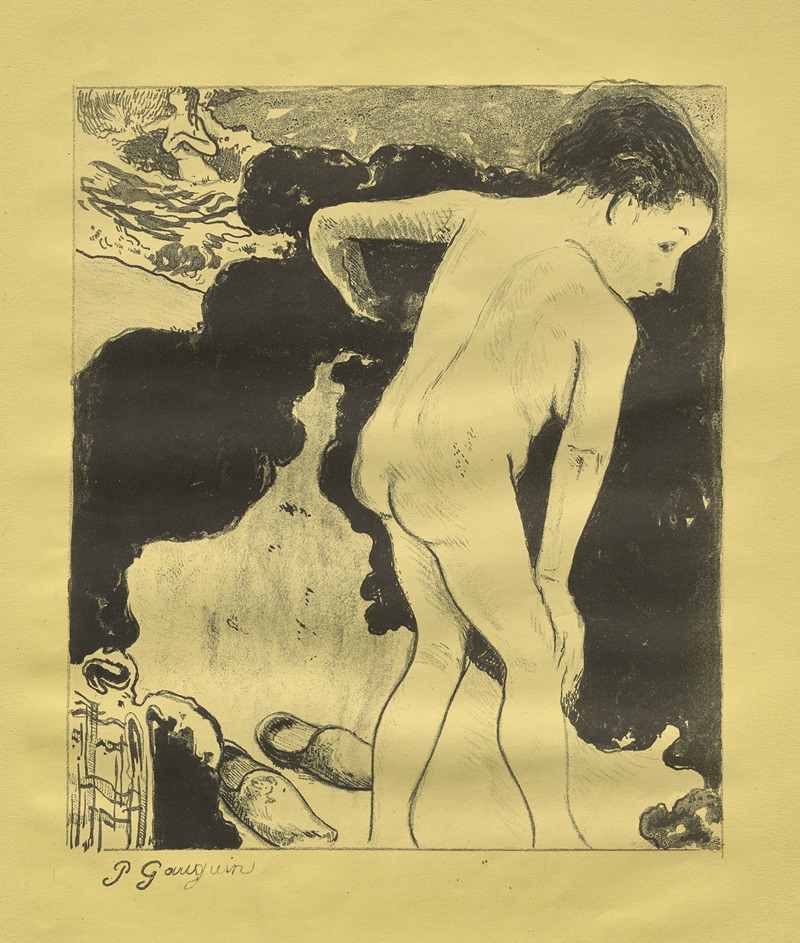
Breton Bathers
A hand-painted replica of Paul Gauguin’s masterpiece Breton Bathers, meticulously crafted by professional artists to capture the true essence of the original. Each piece is created with museum-quality canvas and rare mineral pigments, carefully painted by experienced artists with delicate brushstrokes and rich, layered colors to perfectly recreate the texture of the original artwork. Unlike machine-printed reproductions, this hand-painted version brings the painting to life, infused with the artist’s emotions and skill in every stroke. Whether for personal collection or home decoration, it instantly elevates the artistic atmosphere of any space.
"Breton Bathers" is a painting by the French Post-Impressionist artist Paul Gauguin, created during his time in Brittany, a region in northwestern France. Gauguin is renowned for his bold use of color and synthetist style, which sought to synthesize form and color to express emotions and ideas rather than merely replicate the natural world. This painting is one of several works that Gauguin produced during his stays in Brittany, particularly in the small village of Pont-Aven, which became a hub for artists seeking inspiration from its rural and traditional lifestyle.
Gauguin first visited Brittany in 1886 and was captivated by its rugged landscape and the simplicity of its people, which he felt contrasted sharply with the industrialized and modernized Paris. The Breton people, with their distinct customs and traditional attire, provided a rich source of inspiration for Gauguin and other artists of the Pont-Aven School. This group of artists, including Émile Bernard and Paul Sérusier, sought to break away from the Impressionist focus on naturalistic representation and instead emphasized symbolic content and abstract forms.
"Breton Bathers" reflects Gauguin's interest in capturing the essence of Breton life and landscape. The painting depicts a group of women bathing, set against a backdrop that suggests the rural and pastoral environment of Brittany. Gauguin's use of color in this work is notable; he employs a palette that is both vibrant and harmonious, using broad, flat areas of color to create a sense of depth and movement. This technique is characteristic of his synthetist approach, which aimed to convey the artist's subjective experience rather than a literal depiction of the scene.
The composition of "Breton Bathers" is carefully constructed, with the figures arranged in a way that leads the viewer's eye through the painting. Gauguin often used such compositional techniques to guide the viewer's interpretation and to emphasize the symbolic nature of his work. The figures in the painting are stylized, with simplified forms that reflect Gauguin's interest in non-Western art and his desire to move away from the realism that dominated much of 19th-century European art.
Gauguin's time in Brittany was a period of significant artistic development, during which he refined his style and explored themes that would later become central to his work in Tahiti. The Breton paintings, including "Breton Bathers," are considered important precursors to his later, more famous works created in the South Pacific. These paintings demonstrate Gauguin's evolving artistic philosophy and his commitment to exploring new ways of seeing and representing the world.
"Breton Bathers" is an example of Gauguin's innovative approach to art, which has had a lasting impact on the development of modern art. His work in Brittany helped to lay the groundwork for movements such as Symbolism and Primitivism, influencing a generation of artists who sought to break free from traditional artistic conventions. Today, Gauguin's Breton paintings are celebrated for their bold use of color, innovative compositions, and their ability to capture the spirit of a place and its people.






